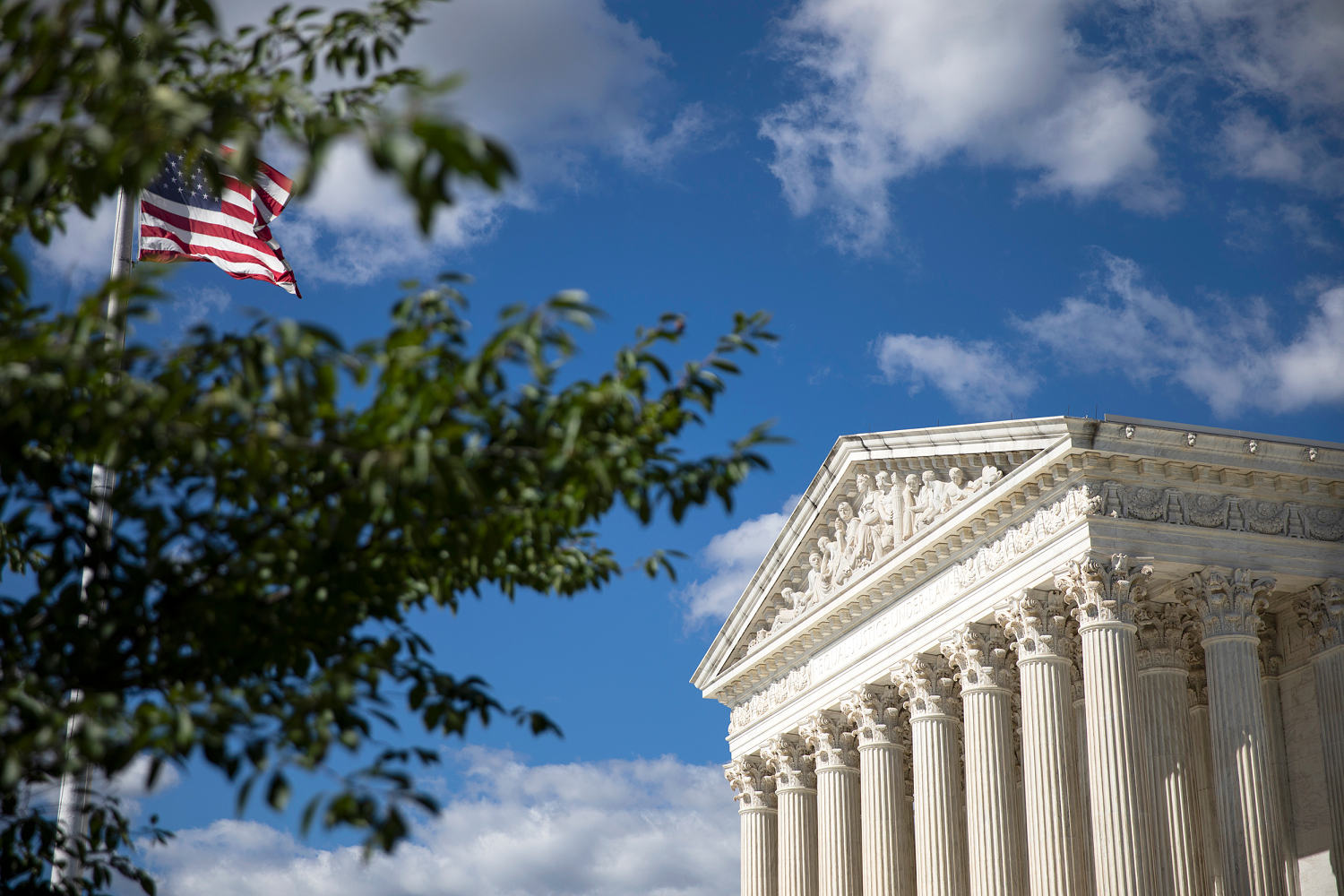
President Joe Biden’s announcement Monday that a Supreme Court justice’s lifetime tenure needs to end is absolutely justified, but his suggestion to institute 18-year term limits for the justices is not the best solution.
Rather, requiring Supreme Court justices to return to the Senate every decade for votes — to determine whether they are retained for another 10 years or are dismissed — would promote much-needed accountability while allowing able justices to continue to serve.
This concept is a hybrid variation of a well-established procedure in many states. As of last year, 23 states required judges on their highest courts to be candidates in elections in which voters decide whether they should continue in office or not.
Requiring Supreme Court justices to return to the Senate every decade for a vote would promote much-needed accountability while allowing able justices to continue to serve.
Letting voters decide makes sense in state judiciaries. In 24 states, judges in the states’ highest courts take office only after winning in partisan or nonpartisan elections. In other states, the judges are appointed.
Candidates to serve on the U.S. Supreme Court, in contrast, are confirmed by majority vote in the U.S. Senate after having been nominated by the president.
Conferring on the Senate, which confirmed justices originally, the duty to decide whether justices merit retention comports with the Constitution’s original allocation of authority.
Requiring a sitting justice, after a decade on the bench, to return to the Senate for a retention vote would vastly promote accountability.
And accountability is badly needed now to rein in the current court’s aggressive agenda to overturn existing rights and cast long-standing precedents aside to satisfy the political agenda of its conservative majority.
University of Texas law professor Steve Vladeck described how, in the last term, the Supreme Court massively increased the power of the presidency and the ability of judges to overturn decisions made by federal regulators.
If, in a confirmation hearing before the Senate Judiciary Committee, a nominee conceals (or even misleads) senators about judicial philosophy to gain confirmation, there are no consequences once the justice takes office.
The retention process promotes accountability for such behavior.
In his confirmation hearing, Brett Kavanaugh testified that Roe v. Wade, recognizing the constitutional right to abortion, was settled law.
“It is settled as a precedent of the Supreme Court, entitled the respect under principles of stare decisis,” Kavanaugh said. The legal principle “stare decisis” refers to a court’s applying prior decisions when ruling on a similar issue — a foundational rule, which the current Supreme Court has flouted in key decisions.
Another nominee of former President Donald Trump, Neil Gorsuch, testified similarly in his confirmation hearing.
“I would tell you that Roe v. Wade, decided in 1973, is a precedent of the United States Supreme Court. It has been reaffirmed,” he said. “A good judge will consider it as precedent of the U.S. Supreme Court worthy as treatment of precedent like any other.”
Kavanaugh and Gorsuch in 2022, joined by three other conservative justices, overruled Roe v. Wade. At least two senators who voted to confirm both men, Republican Susan Collins, of Maine, and Democrat-turned-independent Joe Manchin, of West Virginia, indicated they had been misled.
The retention process promotes accountability for such behavior. Justices would be required to appear before the Senate Judiciary Committee to explain how their subsequent rulings conformed to sworn testimony given during their confirmation processes.
If a majority of the Senate is dissatisfied with their explanations about the differences between their testimony and their subsequent actions, the Senate could refuse to retain them.
Another option for the Senate would be to decide not to retain a justice for any other reason, including ethical breaches, incompetence, failing mental acuity, political agendas or other relevant behavior.
Biden’s term limits proposal fails to promote accountability. If every justice is removed after 18 years, the sitting justices have the same degree of freedom from accountability that they possess today.
Biden’s term limits proposal fails to promote accountability.
They never are called to account for false statements in the confirmation process or ethical breaches or gross application of the Constitution, as in the court’s recent immunity decision allowing a president to act as a criminal without consequences.
The threat of opprobrium resulting if a justice were discharged by a Senate vote of non-retention alone could be a major deterrent against misconduct by a sitting Supreme Court justice.
Moreover, term limits throw out good justices and bad justices alike. The retention process allows judgments to be made by the Senate, which can retain in office those who are worthy of another decade on the bench.
Some may object that a retention vote would inject too much political consideration — for example, by failing to retain a justice initially nominated by the political party then in the minority.
But the initial confirmation is highly political already. In its role in confirming nominees, the majority party in the Senate regularly has the deciding say.
In recognition of this reality, the makeup of the current court is a campaign issue now.
Eighteen years is a long time. Having an opportunity to assess the service of justices at 10-year intervals would allow for earlier retirements for those justices not worthy of staying in office.
Both Biden’s proposal and this one would require a constitutional amendment. Given that arduous path, a remedy that ensures judicial accountability should be preferred.

Leave a Reply